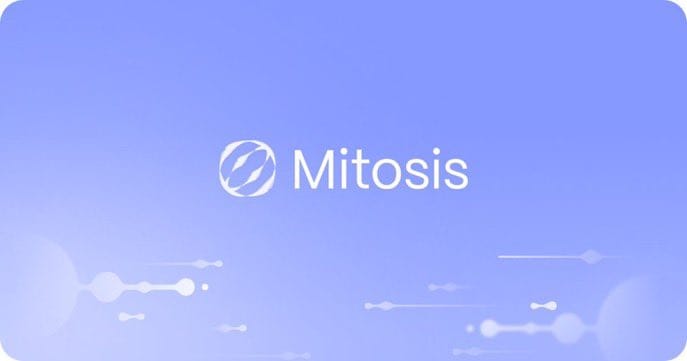Unlocking DeFi’s Potential: How Mitosis University’s Tools Turn Beginners into Liquidity
Introduction
The world of decentralized finance (DeFi) is often viewed as a complex labyrinth layered with smart contracts, liquidity pools, wrapped tokens, and arcane yield strategies. For the uninitiated, entering this space can feel like decoding an entirely new language. Mitosis University exists to change that narrative. As the educational arm of the Mitosis ecosystem, it acts as a beacon for newcomers eager to understand, engage, and ultimately thrive within the DeFi landscape. Through practical guides, hands-on testnet simulations, and community-driven learning, Mitosis University transforms everyday users into liquidity pioneers capable of navigating intricate tokenomics, managing assets across chains, and even influencing governance.
By providing digestible explanations of concepts like miAssets, Ecosystem-Owned Liquidity (EOL), Total Value Locked (TVL), and Token Generation Events (TGEs), the platform makes advanced financial mechanisms accessible to everyone—from students and freelancers to small business owners. Let’s explore how Mitosis University is unlocking DeFi’s potential by equipping users with the tools they need to master liquidity provision and innovate across a multi-chain ecosystem.
Demystifying DeFi Through Practical Learning
From Confusion to Clarity: Understanding Core DeFi Concepts
Mitosis University begins by unpacking the fundamentals—what is DeFi, how does it differ from traditional finance, and why does it matter? These aren't rhetorical questions. Through rich multimedia modules and real-time testnet applications, users grasp essential terms like stable coins, TVL (Total Value Locked), smart contracts, and p2p (peer-to-peer) exchanges. Concepts like wrapped tokens —assets that represent a token on another blockchain (e.g., wrapped BTC on Ethereum) are explored with visual aids and real-world analogies.
Example: Imagine explaining wrapped tokens using airline miles—your miles from one airline can be converted into equivalent value with a partner airline, just as a wrapped ETH (wETH) maintains the value of ETH while being usable on a different chain like Solana.
Exploring miAssets and Tokenomics Through Case-Based Tutorials
Once the basics are covered, learners dive into more advanced topics like miAssets—tokenized representations of real-world or on-chain value within the Mitosis ecosystem. These assets can be staked, lent, or used in liquidity pools. Understanding tokenomics—the study of a token's supply dynamics, inflationary/deflationary models, and utility—is made interactive through hands-on simulations.
Example: A user can create a yield strategy using a miAsset like miUSDC in a liquidity pool paired with miETH, track its performance on the testnet, and see how different APYs (Annual Percentage Yields) affect long-term returns.
Hands-On Engagement with DeFi Tools
Learning Liquidity Provision and Pool Management
Liquidity is the lifeblood of any DeFi protocol. Mitosis University uses animated walkthroughs and live dashboards to teach users how to add liquidity to pools, calculate impermanent loss, and monitor pool performance. Users learn to identify low-risk, high-reward pairs, understand slippage, and engage with automated market makers (AMMs).
Example: Consider a case where a learner provides liquidity in a miUSDT/miDAI pool. The course guides them through analyzing price ratios, tracking TVL, and responding to liquidation risks in volatile markets.
Navigating Cross-Chain Ecosystem-Owned Liquidity (EOL) One of the crown jewels of the Mitosis ecosystem is its Ecosystem-Owned Liquidity model. Unlike traditional DeFi models that rely on user liquidity (which is often mercenary and short-term), EOL ensures the protocol itself holds liquidity across multiple chains. Mitosis University walks users through setting up liquidity on chains like Solana, Ethereum, and Arbitrum, all through interactive dashboards.
Example: A testnet simulation allows a student to create cross-chain EOL strategies—contributing to a miBTC pool on Solana while staking governance tokens on Ethereum. The user learns about bridging assets, wrapped tokens, and chain-specific gas fees.
Building Real-World Confidence Through Governance and Innovation
Participating in DAO Governance and Community Voting
Beyond just using DeFi tools, Mitosis University encourages learners to govern them. Students are introduced to DAO (Decentralized Autonomous Organization) principles and participate in simulated votes on protocol upgrades. They explore how total supply and token distribution influence voting power, and how proposals are created, debated, and passed.
Example: A student proposes a new yield strategy to improve EOL efficiency. Through a mock DAO vote, they defend their idea, gather support, and observe the democratic decision-making process of decentralized governance
Inspiring Innovation Through Real-World Analogies and Case Studies
Innovation thrives when learning is applied. Mitosis University regularly showcases user-generated strategies and experiments. Whether it’s a developer creating a new smart contract for miNFT auctions or a student designing a custom liquidity pool for stable coins, these examples encourage others to experiment.
Example: Inspired by a tutorial, a learner in Latin America builds a localized DeFi hub using Mitosis tools, helping local vendors accept payments in miAssets. Their strategy leverages stable coin pools, p2p transfers, and DAO voting to create a self-sustaining micro-economy
Conclusion
DeFi has long been hailed as the future of finance, but without the proper tools and education, its promise remains out of reach for most. Mitosis University changes that by offering a rich, hands-on curriculum that doesn’t just explain concepts—it empowers users to engage, build, and innovate. By demystifying advanced topics like liquidity provision, cross-chain EOL strategies, and DAO governance, the platform unlocks the potential of DeFi for users around the world.
More than just a learning center, Mitosis University is a transformative launchpad for the next generation of DeFi pioneers. It’s where complete beginners—those who may have never interacted with a smart contract or heard of tokenomics—begin their journey and gradually evolve into confident contributors within the decentralized finance ecosystem. Through hands-on tutorials, real-time testnet simulations, and community-driven learning, learners move beyond theory to become active builders, strategists, and governance participants.
Mitosis University doesn't merely teach users how to navigate liquidity pools or swap wrapped tokens—it empowers them to understand the why behind each mechanism. It nurtures critical thinking around yield strategies, the implications of total supply on token value, and how EOL (Ecosystem-Owned Liquidity) enhances protocol sustainability. As students engage with cross-chain DeFi infrastructure, from Solana to Ethereum and beyond, they gain the tools to create their own decentralized applications, propose DAO initiatives, and help shape the protocols they once only used.
Whether you're staking your first miAsset in a stable coin liquidity pool or architecting a multi-chain proposal that could impact millions in TVL, Mitosis University surrounds you with the resources, mentorship, and collaborative spirit needed to thrive. It’s not just preparing users for the future of finance—it’s helping them build it. With Mitosis University, you’re not simply learning about DeFi; you’re becoming part of the movement that defines it.


Comments ()